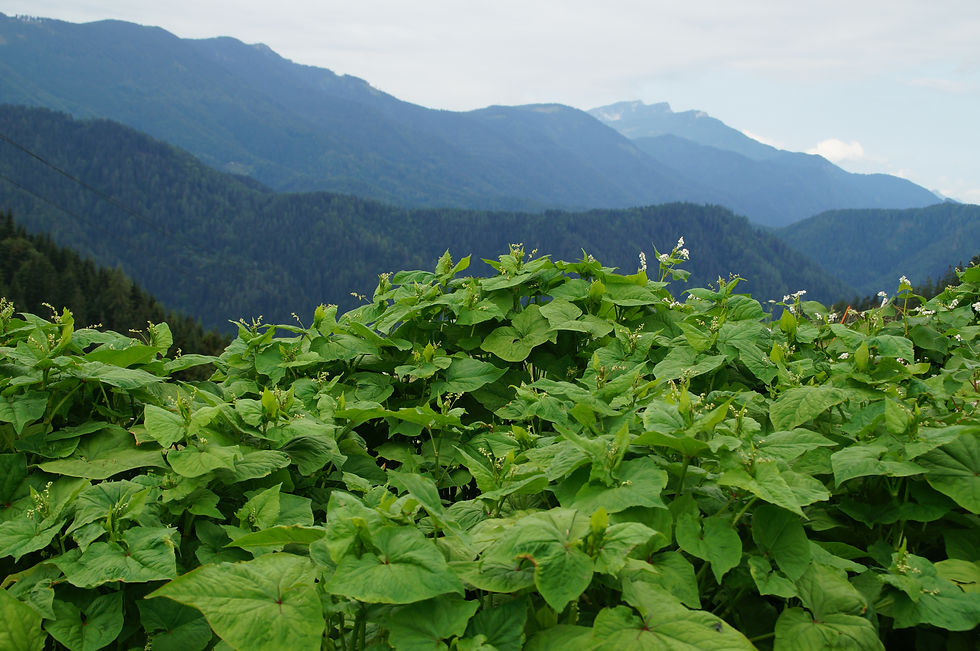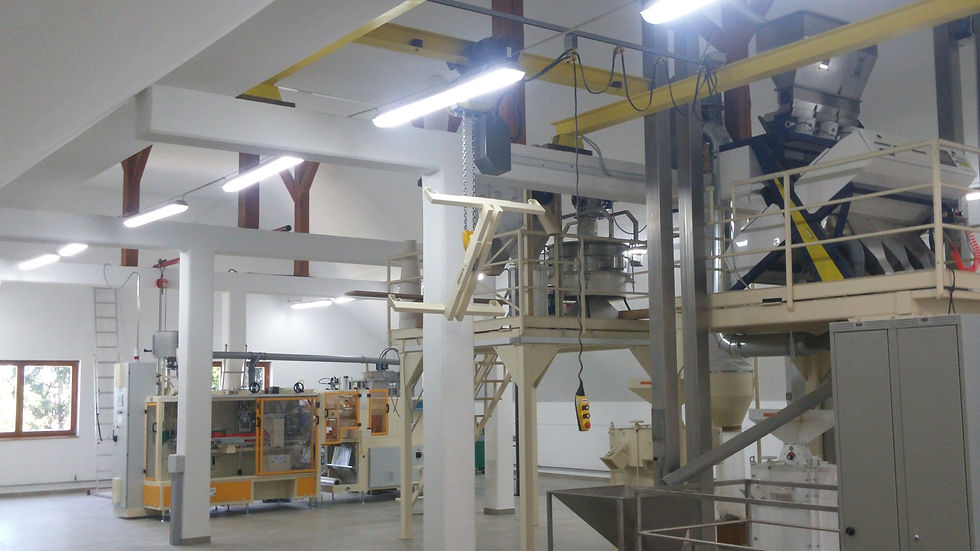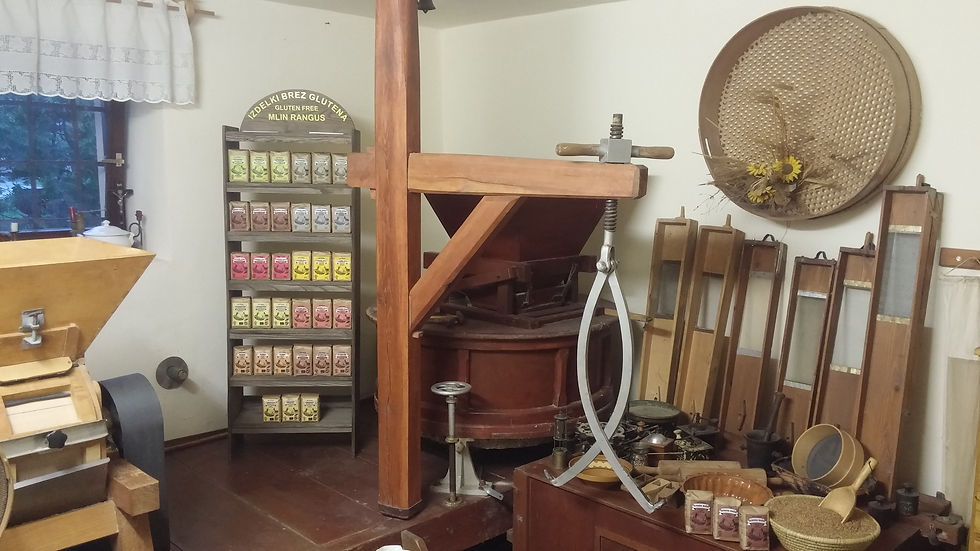Milling
At Mlin Rangus, we combine a rich tradition of milling with innovative approaches for healthy and natural nutrition. We grind grains on millstones, which preserves vitamins, minerals and fiber and gives the flour a distinctive, full flavor.
We grind various grains – wheat and rye on a roller mill, spelt and corn on stones. Buckwheat and Tartary buckwheat are ground on a special stone, which ensures higher quality and greater nutritional value.
We are particularly proud of our separate gluten-free line, where carefully selected procedures ensure the safety and purity of our products. We develop in step with modern techniques, while maintaining the knowledge and tradition we have been building on for many years.




Stone grinding
Grain drying
Presentation of the
barracks
The special feature of a mill with grinding stones is that the grinding is done between the millstones. The millstones are made of natural materials (emery, quartz, magnesium, etc.), they ensure finely ground flour and an optimal grinding process. The flour particles have a large surface area, which increases their ability to absorb liquid. This ability ensures the airiness and elasticity of the dough, which is easy to process. Furthermore, this property has a positive effect on digestion by ensuring that the organism receives the best possible benefit, in the form of the natural content of vitamins, minerals and proteins in the flour. The grinding method preserves the vitamins, minerals and proteins in the flour as a result of the low grinding temperature. Only clean and high-quality grain gives good quality flour. The natural grinding process ensures healthier and fresher flour. The natural content of nutrients allows for the production of bread with a better aroma and taste. Millstone grinding is a process that has its own tradition. The quality and durability of quartz in connection with flour production have been known for centuries.
When buying buckwheat, we dry it in a food dryer. We clean the buckwheat and prepare it for processing. Quickly and properly dried grains should have a nice shine on the surface. To maintain the quality of crops, especially buckwheat, it is extremely important to dry the grains quickly to below 15% moisture and not to allow damp grains to lie in bags or piles. Only by drying them quickly immediately after harvest can we maintain their original quality.
Making porridge - peeling and using buckwheat porridge. Buckwheat grains are more difficult to peel than barley because the grain is brittle and the husk is very hard. Ten years ago, Slovenian scientists from the Biotechnical Faculty in Ljubljana, in collaboration with the Swedes, found that traditionally peeled Slovenian buckwheat porridge, compared to industrial porridge, has substances that are similar to the highest quality dietary fiber and protect our digestive tract. In Dolenji Vrhpolje near Šentjernej, in collaboration with experts from the Biotechnical Faculty, the miller Rangus created an original buckwheat peeler that works on the same principle as typical old Slovenian feet. This method of peeling preserves, in addition to high-quality retrograde starch, substances (antioxidants, minerals) in buckwheat porridge that protect our cells from damage and help lower the concentration of cholesterol in the bloodstream. At the Rangus mill, we use the highest quality buckwheat crop for peeling buckwheat porridge, and we carefully monitor this buckwheat from sowing to harvest and on through rapid drying to peeling. Compared to other typical starchy foods (potatoes, white wheat bread, and white buckwheat flour), buckwheat porridge has a higher proportion of slowly digestible and resistant starch, which affects the slower absorption of sugar from the digestive tract and thus a smaller and more even increase in sugar and insulin in the blood. Through research by Slovenian scientists, which has also been published in American and Japanese scientific journals, we have found that when preparing buckwheat foods, especially Slovenian baked buckwheat porridge, up to 5% resistant starch can form in the porridge, which is very important from the perspective of the diet of patients with diabetes and for the prevention of colon cancer. Undigested starch is used for its metabolism by bacteria that are normally present in the colon. Fermentation products are also volatile short-chain fatty acids: acetic, propionic and butyric. Special attention is paid to butyric acid, which acts as a substrate in maintaining normal intestinal integrity. As a protective factor against colon cancer, it participates in inhibiting the growth of damaged or altered cells and, by stabilizing DNA and repairing its damage, maintains the normal shape of colon cells. Inhibiting the growth of harmful microorganisms, better absorption of fluids and electrolytes and moderately reducing local acidity are additional advantages of volatile fatty acids for protection against colon cancer. By studying the physiological function of fiber, many scientists have come to the realization that these substances are not only important for the proper functioning of the digestive tract. They also regulate the metabolism of sugar and fats and even the balance of microelements, which can contribute to the prevention of civilization diseases such as: diabetes, obesity, cardiovascular diseases and colon cancer. Buckwheat is a rich source of crude fiber. Our buckwheat porridge contains 1.2% of these, in addition to approximately 5% of slowly digestible starch. Buckwheat is a plant that offers a number of opportunities for the development of health products that are known in other parts of the world (for example, buckwheat tea, aged buckwheat vinegar, bread with buckwheat bran, foods naturally colored with buckwheat leaf flour). Our products are stored in a newly renovated cold store with a constant temperature of 10ºC. This ensures the preservation of quality. In product development, we cooperate with renowned experts on the basis of a contract between Rangus Mill and the Biotechnical Faculty of the University of Ljubljana. Experts from the Biotechnical Faculty also monitor the quality of buckwheat porridge, buckwheat flour and other Rangus Mill products.
